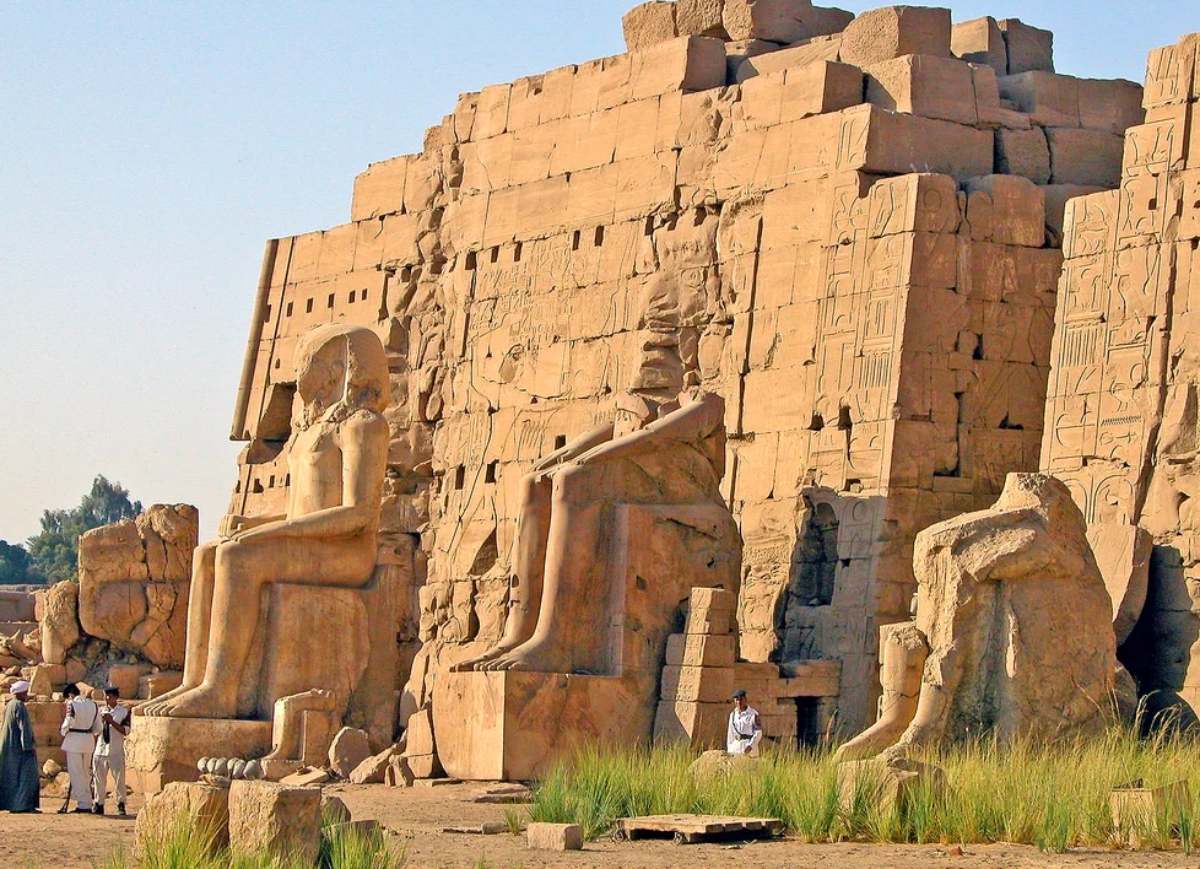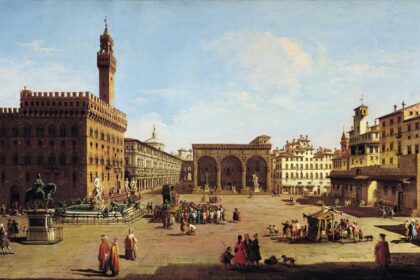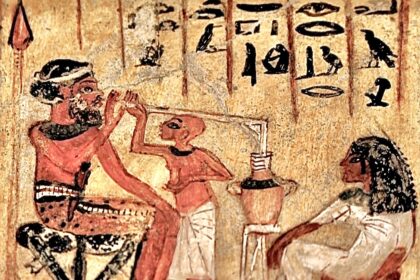Economic crises and political conflicts are not an invention of modern times. In ancient Egypt, too, there were repeated phases of economic and social problems. One of these occurred around 3,100 years ago at the end of the 20th Dynasty. Supply bottlenecks, a lack of grain deliveries, and a shortage of labor—these problems seem very familiar to us today, but they also affected the Egyptians around 1100 BC. Evidence of this ancient Egyptian crisis can be found not only in papyrus texts and other inscriptions but also in the necropolis of Dra’ Abu el-Naga, west of Thebes.
Scarcity and conflicts at the end of the New Kingdom
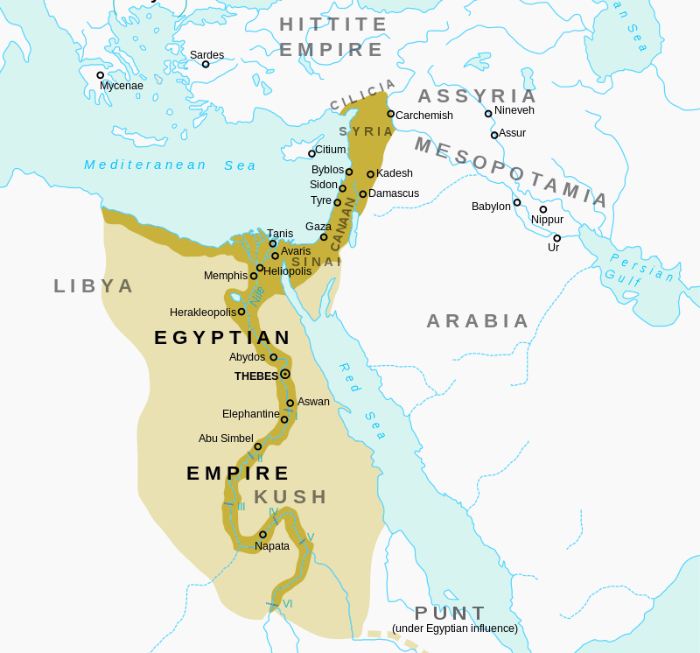
There is hardly any other period of ancient Egypt from which we have so many textual sources as the period of the 20th Dynasty, which lasted from 1185 to 1070 BC. During this time, Ramesses III, who is thought to be the last great pharaoh in Egyptian history, was king.
Supply and food shortages
The written evidence from this period includes monumental, primarily religious inscriptions from temples and tombs, as well as numerous papyri and inscribed pottery shards or limestone cuttings with administrative and economic texts. From them, it is clear that this period at the end of the New Kingdom was marked by political, social, and economic problems, which finally led to a severe crisis under the rulers Ramesses IX, X, and XI.
Already in the reign of Ramesses III, food shortages and supply bottlenecks became tangible. A telling document is the famous “Turin Strike Papyrus” from the 29th year of this king’s reign: Because the monthly grain deliveries to the Theban necropolis workers did not arrive, they stopped working at the construction site in the Valley of the Kings. Other strikes over unpaid food rations are also documented under Ramesses IX and X.
Too few workers and enemy attacks
In the late New Kingdom, the number of workers at the royal tombs also continued to decrease. Only 32 workers were involved in the construction of the tomb of Ramesses X, not even half as many as at the tomb of his predecessor. At the time of Ramesses XI, the last pharaoh of this dynasty, only 23 workers were documented.
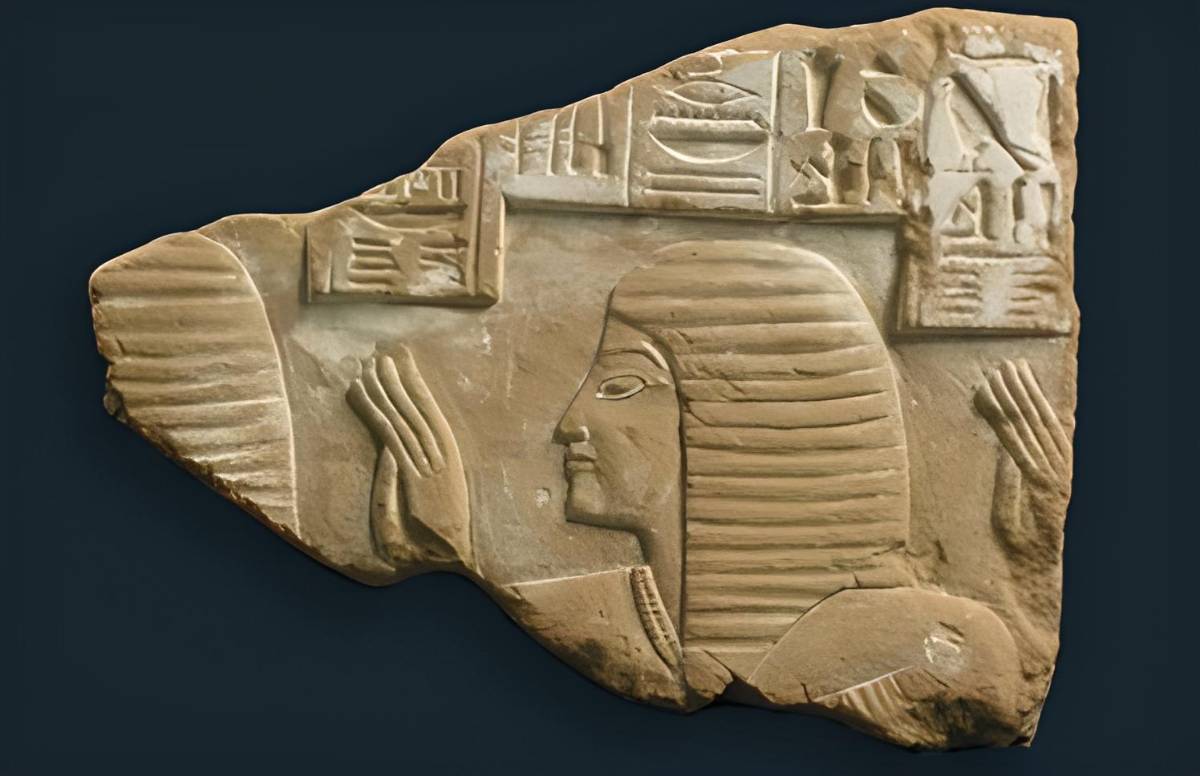
Despite the continuing crisis and reduced work crews, however, Ramesses X and Ramesses XI still had their tombs built in the Valley of the Kings. However, both sites were abandoned, presumably due to the uncertain situation in Thebes. The mummified bodies of Ramesses VIII, X, and XI may have been interred instead in the Ramesside residence city of Pi-Ramesses in the eastern Nile Delta, but their graves have not yet been found there.
Another constant challenge to the Egyptian empire at this time was the invasion of external enemies, especially from areas west of Egypt, which further destabilized the country. These attacks had already led to the cessation of work on the royal tomb at the end of Ramesses III’s reign and subsequently under Ramesses VI, IX, and X. The progressive shortage situation and growing security problems at Thebes are particularly well documented by the so-called “Tomb Robbery Papyrus,” in which necropolis inspections and trials of looters are recorded in writing.
Clear indications of a crisis
Together with other documents of the late Ramesside period, they reflect not only political instability and resource scarcity but also the growing impoverishment of the population. Thus, it is clear from various passages in the text that stolen burial goods and temple goods were exchanged for food.
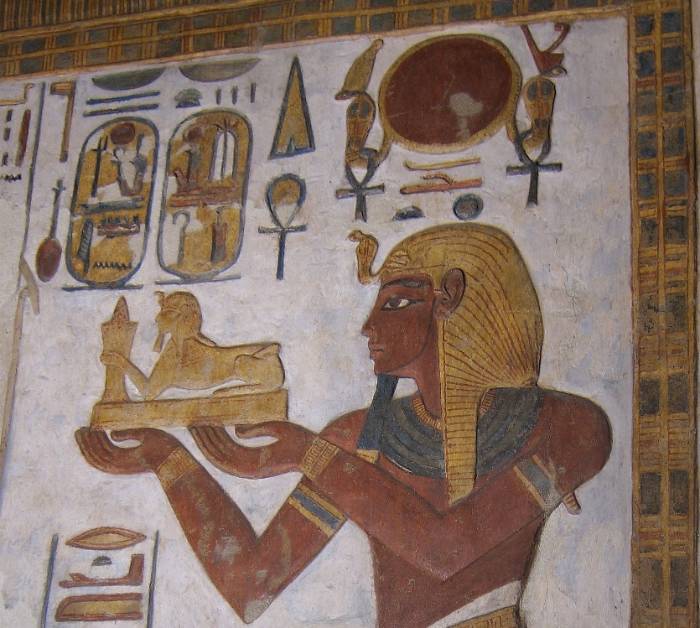
The picture of economic decline and an increasingly dysfunctional central state conveyed by these sources is also confirmed by archaeological observations. As a result of a steadily increasing shortage of raw materials, older funerary inventories, especially wooden coffins, were increasingly reworked and reused at the end of the 20th and especially in the 21st dynasty. The prevailing lack of resources is also evident from the found material recovered from the tomb of the high priest Amenhotep at Dra’ Abu el-Naga.
What the tomb of the high priest Amenhotep reveals
The high priest of Amun, Amenhotep, had assumed his office in the first half of the reign of Ramesses IX and was one of the major players at the end of the 20th Dynasty. As the first worshipper in the Karnak temple and head of the Amun domain, whose economic power had grown steadily in the New Kingdom, Amenhotep was the highest political authority and holder of the greatest amount of power in Thebes.
Double tomb of high importance
His funerary temple and that of his father and predecessor in office, Ramessesnakht, are still being researched. In this ancient Egyptian necropolis west of Thebes, officials and high dignitaries from the New Kingdom—among them Amenhotep and his father—were buried alongside pharaohs and dignitaries from the 17th Dynasty.
The funerary temples of these two Amun high priests are located in the double tomb complex K93.11/K93.12. With a courtyard terrace of over 1,600 square meters, it is one of the largest rock-cut tomb complexes of the New Kingdom in Thebes-West.
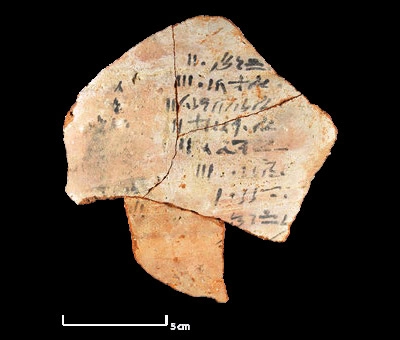
Archaeologists have been researching this double tomb complex since at least 1993. Among other things, they have discovered that the complex is integrated in a special way into the religious topography of the necropolis. From K93.11/K93.12, there is a direct line of sight to the main temple of Karnak on the east side of the Nile. In addition, the precisely measured main axis of the nearby temple of the royal couple Amenhotep I and Ahmose-Nefertari, called “Men-Set,” is apparently aligned with the double tomb complex.
Insight into the time of Ramesses XI
Early in the project, archaeologists came across relics of the ruined tomb temple of Ramessesnakht, which was decorated during the reign of Ramesses VI, in the open atria of K93.11. Among the finds were thousands of fragments of the relief-decorated wall covering, parts of columns, capitals, and friezes made of sandstone, and the remains of a monumental mud-brick architecture. However, the burial of Ramessesnakht was not found. For more than 16 years, researchers have been investigating the tomb temple of Amenhotep in the area to the south, K93.12. There, too, thousands of relief and architectural fragments made of sandstone were recovered.
The finds and features documented in the tombs of Amenhotep and Ramessesnakht have not only expanded our knowledge of the architecture and religious function of the monumental tomb of the late Ramesside period, but they also provide insights into the political and economic situation of the period from Ramesses IX to Ramesses XI. For example, the looted tomb furnishings of Amenhotep, recovered in his remains, contained reused inventory, even though the high priest was the highest representative of the local elite.
Priestly tomb with savings
Also conspicuous is the absence of a stone sarcophagus, which had been an integral part of elite burials in previous decades. Amenhotep was buried in a wooden coffin that imitates a sarcophagus made of rose granite in its design, from the color scheme to the style of its decoration and lettering—an indication that logistically costly quarry expeditions were no longer taking place in his time.
And something else is striking: If one compares the construction work and the wall relief in the complexes of Ramessesnakht and Amenhotep, a clear drop in the quality of the stonework is recognizable. There is a period of at least 25 years between the construction of the tomb temples of Ramessesnakht and Amenhotep. During this time, the availability of specialized and skilled labor, especially in stone carving, has apparently been drastically reduced. The “first guard” of the few remaining stone specialists was probably tied up at the construction site of the royal tomb in the Valley of the Kings.
Political conflict in the material findings
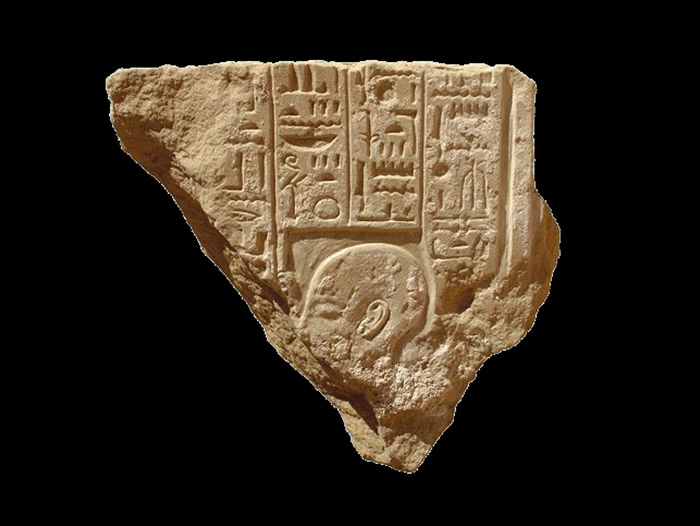
During the investigation of the high priest burial temples in the necropolis Dra’ Abu el-Naga, archaeologists came across another sign of political-religious upheaval: The burial temples of the Amun high priests Ramessesnakht and Amenhotep were deliberately destroyed at the end of the New Kingdom.
This is evidenced by the layer of sandstone debris that covers almost the entire area of both complexes and lies on the floor of the court at that time. It consists of thousands of fragments of shattered wall cladding and architectural elements, many of which show clear secondary chisel marks.
Evidence of the “war against the High Priest”
This finding can be linked to a historical sequence of events that at the same time marks the end of the New Kingdom, namely the so-called “war” or “transgression against the High Priest” around 1085 BC. This involved a violent conflict between Amenhotep and Panehsi, the commander of the troops and administrator of the Nubian provinces, during the 17th and 18th years of Ramesses XI’s reign. Exactly when this happened and how this conflict unfolded is unclear because this event is mentioned in only a few written sources.
With the material findings in tombs K93.11/K93.12, meaningful archaeological data could now be fed into the extensive discussion about the events during the transition from the 20th to the 21st dynasty. They form an important contribution to a better understanding of the historical situation that led to the complete dissolution of the local power structure with the death of Amenhotep and the end of the influential Ramessesnakht family.
A programmatic “rebirth” and the end of a dynasty
This deep break was the starting point of a new political beginning, which was also programmatically identified as such at the time: In year 19 of his reign, Pharaoh Ramesses XI let begin a new yearly count, the “repetition of birth.” This counting, in which the 19th year of Ramesses’ reign was counted as year one, was supposed to stand for the overcoming of the unstable state of emergency. It ended with the death of the king in his 29th year of reign.
The installation of a new dynasty of high priests under Ramesses XI also laid the foundations for the subsequent nationwide reorganization of the balance of power. Under his successor, Smendes, Egypt was divided into two political and administrative units: The southern part was ruled by the Theban high priest; in the northern part of the country, the Libyan-born kings of the 21st Dynasty ruled, who resided in Tanis.
The Late Bronze Age Collapse
Egypt was not the only empire affected. From archaeological finds and written evidence, it is clear that Egypt was affected by a widespread crisis around 1100 BCE. However, this must be viewed in the larger context of a development that affected the entire eastern Mediterranean and western Asia—the Late Bronze Age Collapse.
Comprehensive decline
Triggered by a range of stressors, many states and urban centers of the Aegean and Near East collapsed and lost power and economic influence over a period of about 200 years at that time. These included the advanced civilization of Mycenae, the empire of the Hittites, and also the city-states of Canaan in the Levant. The causes of this decline are unclear, but in addition to natural disasters and migration movements, a change in climate is suspected.
As part of the economic and diplomatic network, Egypt was also affected by this large-scale collapse. The flows of goods and raw materials that had been firmly established through trade dried up. As a result, a material decline could also be observed in Egypt due to the changed socio-economic and political conditions, recognizable, among other things, by the cessation of extensive tomb and temple construction or the material and spatial reduction of the burial effort in often unmarked collective tombs.
Adapted new beginning
Nevertheless, there can be no question of a cultural standstill in the 21st Dynasty. If one considers the minimized, newly configured burial inventories alone as indicators, they testify to a special cultural dynamism and intellectual productivity. In this context, the coffins with their condensed religious iconography have taken over the ritual or transformative function of the earlier decorated rock tomb. With them, an existing tradition of afterlife provision is continued, which was translated into a new material form of expression in response to changed external circumstances.
Bibliography
- Ramsey, Christopher Bronk; Dee, Michael W.; and more. (2010). “Radiocarbon-Based Chronology for Dynastic Egypt”. Science. doi:10.1126/science.1189395.
- Eric H. Cline and David O’Connor, eds. Ramesses III: The Life and Times of Egypt’s Last Hero (University of Michigan Press; 2012).
- William F. Edgerton, “The Strikes in Ramses III’s Twenty-Ninth Year”, JNES 10, no. 3 (July 1951), pp. 137–145.
- Schneider, Thomas (27 August 2008). “Periodizing Egyptian History: Manetho, Convention, and Beyond”. In Klaus-Peter Adam (ed.). Historiographie in der Antike. Walter de Gruyter. pp. 181–197. ISBN 978-3-11-020672-2.


